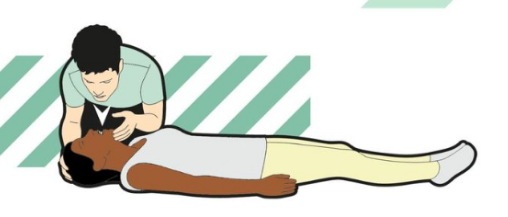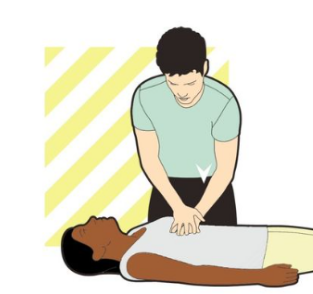Methods for performing cardiopulmonary resuscitation (CPR) on adults.
2024-11-11
I. Ensure environmental safety and judge consciousness
1. If someone is found collapsed, ensure the surrounding environment is safe before approaching.
2. Gently shake the injured person's shoulder and loudly ask, "Are you okay?" to check if there is a response.

II. Open the airway
1. If the injured person does not respond, shout for help.
2. Gently tilt the head back and lift the chin to open the airway of the injured person.
3. Observe, listen, and feel for normal breathing of the injured person (up to 10 seconds). Ignore occasional, irregular gasps, which are common in the early stages of cardiac arrest.
III. Start the first aid process
1. If the injured person is not breathing normally, ask an assistant to call ambulance. At the same time, if possible, ask the assistant to find and bring a defibrillator. If you are alone, use the hands-free function of your mobile phone to talk to the ambulance control center while starting CPR. Do not leave the injured person to look for a defibrillator by yourself.
IV. Perform chest compressions
1. Kneel close to the injured person and place the heel of your hand on the middle of the chest.
2. Put your other hand on top and interlock your fingers.
3. Lean forward so that your shoulders are over your hands. Keep your arms straight and press down hard to a depth of about 5-6 centimeters before releasing the pressure and allowing the chest to rebound.
4. The compression rate is 100 to 120 times per minute.*V. Artificial respiration (if trained)
1. After 30 chest compressions, perform 2 artificial respirations. If you are unable or unwilling to perform artificial respiration, you can continue with chest compressions.
2. Steps for artificial respiration:
- Tilt the injured person's head backward, lift the chin and pinch the soft part of the nose.
- Take a deep breath and cover the injured person's mouth with your mouth to form a seal.
- Blow steadily and firmly into the injured person's mouth for about one second until the chest rises.
- Remove your mouth and observe the chest fall. This is one artificial respiration. Repeat twice.

VI. Continuous operation
Continue to alternate 30 compressions and 2 breaths (30:2) until one of the following occurs:
1. Emergency responders arrive and take over.
2. The injured person begins to show signs of life and breathes normally.
3. You are too exhausted to continue (if there is an assistant, you should swap every one to two minutes, but try to minimize interruptions to chest compressions).
4. The defibrillator is ready for use.
It is important not to interrupt chest compressions for too long during CPR. When attempting artificial respiration each time, insist on two attempts to blow air in.



